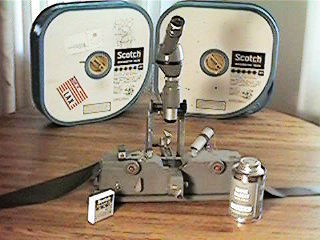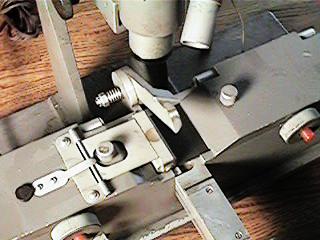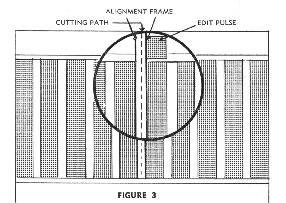|
|
|
|||
|

Smith splicer, with a can of Edivue Diluent (developer) 3M Scotch Brand Aluminized Video splicing tape, and in the background, two 90-minute rolls of 3M Scotch Brand 400 recording tape. Missing from this photo, is the Trimming knife (which included a rubber roller), Trimming block and a pair of cotton gloves, such as those used by film editors, to handle the tape. 
Closeup of the guillotine cutter. 
Figure 3 from the Smith Splicer manual. This is an exaggerated view of what the "developed" video tape looks like. The area inside the circle is what you see looking through the 40-power microscope. The manual's "Recommended Procedure for Splicing TV Magnetic Tape" includes 37 detailed steps needed to make the splice.
|
